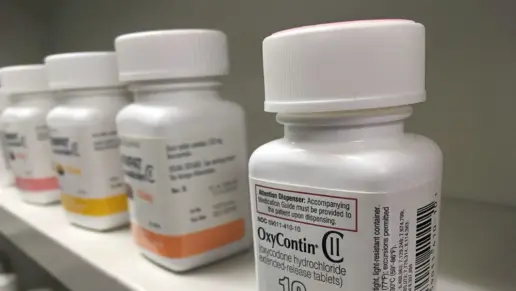What is Meth Addiction?
Methamphetamine (commonly known as meth) is a powerful stimulant. It works on the central nervous system and produces intense feelings of euphoria, well-being, and energy. Due to the intense high, long-lasting effects, and strong desire to take more, meth is highly addictive. Meth use is widespread and devastates users, their loved ones, and society in general. The SAMHSA National Survey on Drug Use and Health 2020 found that 1.5 million people aged 12 and over had a methamphetamine use disorder (MUD). MUD is diagnosed when someone cannot stop abusing meth despite the drug having a detrimental impact on their life.
The good news is that recovery from meth addiction is possible. We can help you to understand more about what it means to be addicted to methamphetamine and assist you in overcoming it.
What Is Methamphetamine?
 Methamphetamine comes from amphetamine. Amphetamine was initially used as a nasal decongestant but is now used to treat conditions such as attention deficit hyperactivity disorder (ADHD), narcolepsy, and obesity. Meth has similar effects to amphetamine in that it causes feelings of pleasure and euphoria and makes the user more talkative, confident, and energetic. In comparison to amphetamine, methamphetamine produces greater effects on mood and cardiovascular measures. It also has more intense and longer-lasting euphoric effects, making meth far more addictive.
Methamphetamine comes from amphetamine. Amphetamine was initially used as a nasal decongestant but is now used to treat conditions such as attention deficit hyperactivity disorder (ADHD), narcolepsy, and obesity. Meth has similar effects to amphetamine in that it causes feelings of pleasure and euphoria and makes the user more talkative, confident, and energetic. In comparison to amphetamine, methamphetamine produces greater effects on mood and cardiovascular measures. It also has more intense and longer-lasting euphoric effects, making meth far more addictive.
Meth has many street names used by dealers to try to avoid detection by the authorities. These names include crank, chalk, speed, fizz, walking zombie, and white.
How Is Methamphetamine Made?
Most meth sold in the US is manufactured and distributed by Mexican drug trafficking organizations. Meth can be made relatively easily and cheaply in small laboratories using ingredients purchased at pharmacies, such as pseudoephedrine or ephedrine. Although they are common ingredients in cold and flu treatments, the sale of pseudoephedrine and similar decongestants has been more carefully controlled since the enforcement of the DEA’s Combat Methamphetamine Epidemic Act of 2005. As a result, the production of methamphetamine has changed.
Meth is now made from different ingredients, including hydrochloric acid, lye, acetone, cyanide, and sulfuric acid. An example of a meth variant that is becoming increasingly common is P2P (phenyl-2-propanone). It is made using phenylacetic acid, which is easier to find, although the meth produced using the P2P method is of lower quality.
The chemicals involved in making meth are hazardous and volatile. Deadly explosions and fires are not uncommon. Even after a meth lab has been shut down, the chemicals involved can affect the surrounding environment for years afterward, causing health problems for local communities.
What Is Crystal Meth?
Crystalline methamphetamine (crystal meth) is a more concentrated form of methamphetamine. It is purer, more potent, and, therefore, more addictive. Unlike meth, which is a powder, crystal meth is a crystalline solid that looks like clear or shiny-blue crystals. As the smokable form of meth, crystal meth provides a more rapid and intense high than other forms. The most common street name for crystal meth is ice, but it is referred to as blade, glass, crystal glass, hot ice, quartz, or tina, amongst many other names.
What Does Meth Do to the Brain and the Body?
As a stimulant, meth stimulates the brain and the body and creates heightened sensations, feelings, and physical effects.
How Meth Affects the Brain
Meth creates a temporary and pleasurable sense of alertness, euphoria, and energy. This feeling occurs because meth increases the amount of dopamine in the brain. Dopamine is a neurotransmitter that stimulates the body’s natural reward center and provides the user with a feeling of reward and satisfaction after using meth. This sensation reinforces the belief that the user is doing something good and makes them more likely to want to experience the feeling again.
Concerningly, these changes in the brain can be long-term and potentially life-threatening. Evidence indicates that exposure to meth is neurotoxic, damaging the nerves in the brain and leading to persistent cognitive impairment, including issues with memory, learning ability, and mental health disorders.
How Meth Affects the Body
Meth stimulates the brain, which, in turn, speeds up other body parts. This includes the cardiovascular system, which can lead to increased heart rate and blood pressure. Meth use can also increase body temperature, alertness, and breathing rates.
Medical Uses for Methamphetamine
The US Department of Drug Enforcement Administration (DEA) has classified methamphetamine as a Schedule II stimulant. This means that it has a high potential for abuse which may lead to severe psychological or physical dependence. Meth can be legally prescribed under the FDA (Food and Drug Administration) approved brand name Desoxyn. Desoxyn is used in a limited capacity to treat attention deficit hyperactivity disorder (ADHD) and obesity. Desoxyn is rarely prescribed, but when it is, the prescription cannot be refilled, and the doses are far lower than the amount people use when abusing meth. Methamphetamine, in its crystalline form (crystal meth), has no medical uses.
How Is Meth Used?
Meth is a white, odorless powder easily dissolved in alcohol or water. It has a bitter taste and is administered by various means. For medical purposes, it is prescribed in pill format. In recreational use, crystal meth is also taken and resembles glass-like shards. One study found that 66% of users were smoking meth, 24% were injecting it, and 10% were snorting it. Injecting meth means that it gets into the bloodstream and, therefore, the brain, quicker. Over time, users may transition from smoking to injecting to achieve a more intense high.
Who Uses Meth?
The SAMHSA National Survey on Drug Use and Health 2020 found that about 2.6 million people aged 12 or over reported using methamphetamine in the past 12 months.
Previously, methamphetamine abuse was prevalent among middle-aged white people, but a 2021 study found that the people who use meth have become more diverse. There was a tenfold increase in methamphetamine use disorder (MUD) without injection among Black people, and MUD quadrupled among adolescents aged 18-23. These increases were far larger than among other ages or ethnic groups. The increase in adolescent use of meth is particularly concerning as adolescence is a period of continued brain development, and using methamphetamine at this time could have long-lasting consequences.
Why Do People Use Meth?
Despite the well-documented health risks, many people still use methamphetamine for various reasons. Examples of these reasons include:
- A greater high: Some individuals use meth to achieve a new or enhanced high as they have developed a tolerance to drugs they are already taking.
- Enhance energy and confidence: Meth makes people feel energetic and self-confident. Some people use it to overcome social anxiety or enhance their performance in tasks.
- Stay awake: As a stimulant, meth stops users from falling asleep quickly. Users may take it to stay awake all night, such as students who need to cram for exams.
- Enhance sexual pleasure: Some people use methamphetamine during sexual activity, known as “chemsex.”
- Combat mental health issues: Drug use and other mental illnesses often coexist. Some users self-medicate with meth to escape reality, forget their problems, and alleviate the effects of mental health conditions such as anxiety and obsessive-compulsive disorder (OCD).
- As a result of past trauma: A family history of drug use and childhood trauma can lead to adolescent drug use, which increases the chance of developing an addiction. One study found that childhood physical abuse was associated with drug use by those with methamphetamine dependency.
The 4 Steps to Meth Addiction
Methamphetamine, especially crystal meth, is very addictive, so the chance of quickly developing an addiction is high. A Centers for Disease Control and Prevention (CDC) report found that over half of meth users (52.9%) had a methamphetamine use disorder (MUD), meaning it was having a detrimental effect on their lives, but they were unable to stop. Although the reasons someone takes meth can differ, all addicts generally follow the same behavior pattern leading to full-scale addiction.
- Step 1: Experimentation: Someone may use meth for the first time out of curiosity or a desire to seek a new high if the drugs they are currently using are no longer having the same effect. At this stage, the use of meth will likely feel like a positive experience with few repercussions, which can lead the person to want to use meth again.
- Step 2: Regular use: At this stage, the individual will use methamphetamine regularly and for specific reasons, such as to enhance their energy levels or relieve fatigue for particular occasions or tasks. They will start to develop a tolerance to the drug, which means they need to take larger quantities or use meth more frequently to have the same effect.
- Step 3: Habitual use: Meth use has become habitual, meaning that someone takes it regularly and requires more meth to relieve the withdrawal symptoms they are experiencing. The user has now developed a meth dependency, and other aspects of their life, including work, relationships, finances, and health, are starting to suffer due to their preoccupation with finding and using the substance.
- Step 4: Full addiction: At this stage, meth has wholly taken over the person’s life. They may resort to criminal behavior such as stealing or prostitution to fund their habit. The user may have become estranged from friends and family and have lost their job. Serious health problems have developed, including changes to their physical appearance and mental health conditions such as chronic depression, paranoia, and hallucinations. The person is at daily risk of severe health problems and overdose.
What Are the Effects of Meth Addiction?
All drugs, prescribed and illegal, have some side effects. The severity of these side effects and how long they last depend on many factors, including the substance used, the longevity of use, and the amount taken. Those with substance use disorders usually suffer withdrawal symptoms that can last for days or even weeks after their last dose, encouraging them to use the drug repeatedly to alleviate their suffering.
Some of the health risks associated with meth use are short-term, whereas others develop alongside long-term substance abuse. In the case of methamphetamine, the side effects can be managed in controlled, medicated doses. However, the withdrawal symptoms of meth addiction can be severe and potentially life-threatening.
Short-term Effects of Meth Use
As a powerful stimulant, methamphetamine, even in small doses, can have some significant short-term effects on the brain and body. Examples of these include:
- Increased attention
- More alertness
- Decreased fatigue
- More energy
- Depressed appetite
- Sense of euphoria
- Increased breathing rate
- Increased heart rate
- Irregular heartbeat
- Hyperthermia (elevated body temperature)
Long-term Effects of Methamphetamine Abuse
Prolonged use of meth has many risk factors. These risks are evidenced by physical changes to the body and significant changes in the brain caused by the misuse of methamphetamine. Examples of these physical and mental effects include:
Physical Effects of Long-term Meth Addiction
- Skin conditions: Skin sores are common and caused by compulsive scratching and picking at the skin. Meth addicts can also appear to age rapidly due to a loss of elasticity in the skin and visible skin conditions such as acne and dull, leathery-looking skin.
- Tooth decay and tooth loss: “Meth mouth” is a term used to describe the effect of meth on dental hygiene. Meth use can cause dry mouth, and a lack of saliva, poor nutrition, and poor hygiene can lead to severe dental decay and tooth loss. If crystal meth is smoked using a glass pipe, users can also suffer burns, ulcers, and lesions around their mouths.
- Severe weight loss: Meth suppresses the appetite and raises the metabolic rate, which means that meth users can lose weight rapidly.
- Muscle conditions: Methamphetamine can cause muscle tremors or twitching. In more severe cases, meth can cause rhabdomyolysis, which involves the destruction of muscle tissue resulting in pain and potential kidney failure.
- Effects on the respiratory system: Long-term meth abuse affects the respiratory system in many ways. Users can experience collapsed lungs, develop violent coughing fits, and start coughing up blood due to bleeding in the lungs. There is an increased risk of high blood pressure in the lungs and the right side of the heart (pulmonary hypertension), which can be life-threatening.
- Gastrointestinal issues: Meth use can cause severe gastrointestinal health conditions because it constricts blood vessels resulting in a lack of oxygen to the intestines and bowel, and decreased muscle function. This causes these organs to no longer function correctly; sometimes, the organ tissue dies. Stomach ulcers and perforations can form as well as a complete blockage of the intestines which can be fatal.
- Impact on the cardiovascular system: The American Heart Association reports that methamphetamine use induces potent vasoconstriction that can result in heart disease. Heart disease involves the restriction of blood flow to the heart with the potential to cause many complications, including an increased risk of a heart attack.
- Immune system deficiency: Meth suppresses the immune system meaning that meth users cannot fight off viral and bacterial infections, leaving them in a constant state of illness, pain, and suffering.
- Increased risk of contracting diseases: Meth addicts are more likely to contract diseases such as HIV/AIDS and hepatitis due to risky behaviors. These include sharing meth-taking paraphernalia such as needles and smoking pipes. Drug use can also lead to unprotected sexual activity due to lowered inhibitions or the inability to think clearly about the need for safer sex practices. In addition to the chance of contracting HIV, methamphetamine is implicated in the spread of HIV as it inhibits anti-HIV immunity and facilitates replication in white blood cells.
Psychological Effects of Long-term Meth Addiction
- Psychotic effects: Up to 40% of meth users experience meth-induced psychosis. Examples of these psychotic symptoms include:
- Hallucinations: Meth users can hallucinate things that are not there. This includes “meth mites,” hallucinations of bugs crawling on or under the skin, causing users to pick and scratch at their skin compulsively.
- Delusions: Meth has mind-altering effects and causes the user to believe things that are not based on reality. These can be either positive or negative delusions. Someone may have delusions of grandeur, thinking they are better than everyone and capable of anything. Alternatively, they may feel that they are being spied upon or followed and become increasingly paranoid.
- Paranoia: Meth-induced hallucinations and delusions can lead to paranoia and obsessive thinking. This can include an unfounded mistrust of people or situations if the individual believes they are at risk of harm from people or objects.
- Mood swings: Meth stimulates the rapid release of dopamine in the brain by attaching itself to dopamine receptors. This causes neurons to release significant quantities of this feel-good hormone. This process leads to dopamine levels fluctuating widely, resulting in moments of extreme high when the dopamine level is enhanced, followed by extreme lows when the levels are depleted.
- Depression: Over time, meth not only stimulates dopamine release but also destroys dopamine receptors in the brain. As a result, the brain can become used to dopamine being stimulated by methamphetamine, meaning it no longer produces dopamine naturally. A lack of dopamine can lead to mental illness, including chronic depression.
- Decreased brain function: The long-term damage to the brain caused by prolonged meth use can result in an individual losing some of their brain function. This can result in memory loss, reduced attention span, lack of ability to learn, and impaired decision-making.
- Violent behavior: Methamphetamine causes the user to have increased energy which can lead to hyperactivity, the state of being unusually active and challenging to control. The combination of enhanced energy and meth psychosis can lead to aggression and acts of violence. Meth users can be especially violent and aggressive when experiencing delusions that make them feel threatened.
Risk of Meth Overdose
The risk of overdose and death from meth is high. In 6 years, from 2012 to 2018, the rate of fatalities involving psychostimulants with abuse potential (largely methamphetamine) increased nearly 5-fold. This equated to a total of 10,333 deaths in 2017 alone.
While the number of meth users increased in the same period, it was not at the same rate as the overdoses, creating cause for concern about the way that meth is being used. One potential explanation is polydrug use, which is when a substance user takes more than one drug simultaneously or in quick succession. In terms of treatment admissions, methamphetamine use among heroin hospital admissions increased from one in 50 in 2008 to one in 8 in 2017.
In addition to intentional polydrug use, meth is often cut with other substances by drug dealers to increase the effects, encourage repeated use or make the product go further, therefore, enhancing their profits. This practice increases the risk to the user as they do not know what they are taking and can unintentionally overdose. Sometimes the substances that meth is cut with are relatively harmless and include white powders such as sugar and baking soda. At other times, they can be stimulants such as Adderall and Ritalin or even dangerous opioids such as fentanyl. Fentanyl is up to 50 times stronger than heroin, and when added to other drugs such as methamphetamine, it can create a lethal combination.
How Do I Know if Someone Has a Meth Addiction?
Often the individual using meth is in denial about their behavior and their cravings for the substance are so intense that they do not want to seek treatment to stop using it. Many meth addicts’ friends or family members intervene so that they can get the help they need. If you suspect your loved one is using meth, it’s helpful to know some physical and behavioral signs
Early Physical Signs of Meth Use
Methamphetamine addiction has some obvious physical signs that are not always evident with other drug abuse. However, these signs, which include tooth loss, skin sores, and rapid ageing, usually only occur when someone already has a fully developed addiction to meth. Examples of less prominent, or earlier displayed, physical signs of meth addiction are:
- Dilated pupils
- Rapid and constant speech
- Rapid eye movements
- Increased perspiration
- Facial twitches
Behavioral Signs of Meth Addiction
Methamphetamine use can cause someone’s behavior to change noticeably:
- Changes in sleep patterns: As meth is a stimulant, it is common for users to struggle to sleep or experience insomnia.
- Lack of motivation: When someone has meth addiction, it becomes the center of their life, and they experience intense cravings for the drug. This preoccupation means that the individual no longer displays motivation or interest in anything else, including work, school, hobbies, or relationships. All they can think about is when they can use meth again, either because they are addicted to the high or to alleviate their withdrawal symptoms.
- Distancing from friends and family: Meth addiction can cause someone to distance themselves from those closest to them because they feel ashamed or fear being judged.
- Being secretive: Meth addicts can become particularly secretive. They may become protective of their belongings and personal space to avoid the chance of meth being found, or they may lie about their whereabouts.
- Associating with new people: Meth addiction often comes with new acquaintances. These could be fellow meth addicts or drug dealers. Often those individuals that use meth will actively seek out people and places where meth use is common and accepted.
- Taking risks: Methamphetamine use can affect a person’s ability to assess risks effectively and make healthy decisions. Those with a meth addiction may become involved in criminal activity such as theft. They may also partake in violent attacks, deal drugs themselves, or risk their health by sharing needles or having unprotected sexual intercourse.
What Are My Options for Meth Addiction Treatment?
If you think that you, or a loved one, needs treatment for meth addiction, you may wonder what your options are and what to expect. Every treatment center is different, and the proposed meth addiction treatment program for you will be designed with your individual needs and circumstances in mind. There are, however, some treatments options that are commonly used to overcome an addiction to meth:
- Detoxification: Generally, the first step is to detox the body of methamphetamine. As meth withdrawal symptoms can be particularly severe and unpleasant, it is often recommended that medical detox is undertaken. This involves the patient being hospitalized for a period where their withdrawal symptoms can be monitored and managed safely by medical professionals.
- Inpatient or outpatient treatment: Due to the severity of meth addiction, it is usual that someone with an addiction to the substance will be required to undergo residential treatment. Alternatively, they may attend an Intensive Outpatient Program up to 5 days per week for 8/9 hours each time.
- Behavioral treatment programs: During treatment, those with a meth addiction will partake in behavioral health interventions and counselling to assist them in understanding why they are addicted and how to avoid a relapse. The most common triggers for relapse are the stress cues linked to drug use (such as people, places, things, and moods) and contact with drugs. Cognitive behavioral therapy (CBT), motivational interviewing, and contingency management are common forms of behavioral treatment that can assist in addressing individual triggers and finding ways to overcome them.
Why Treating Meth Addiction Is Challenging
One of the biggest challenges in overcoming addiction to methamphetamine is that, as a May 2022 report in the National Library of Medicine states, there is currently no pharmacological agent that can help patients abstain from meth. This means that, unlike other drugs such as opioids, it is not possible to take medication to lessen the impact of withdrawal systems, curb cravings, or reduce meth’s ability to create an addiction. Many research studies are being carried out to try to find solutions, and areas that are showing promise include:
- Combination treatment for meth addiction: National Institutes of Health (NIH) study has shown promising results in the combination of injectable naltrexone and oral bupropion in treating adults with moderate or severe methamphetamine use disorder.
- A methamphetamine vaccine: A study on rats showed a decrease in the number that self-administered a moderate level of meth after having been injected with the IXT-v100 vaccine.
How Do I Find Meth Addiction Treatment?
Finding the most suitable addiction treatment for you or your loved one can be challenging, but we are here to provide you with the information you need and point you in the right direction. There are trusted resources that you can turn to for advice. Examples of which include:
- Rehab.com: Visit our website to explore 32,000+ accredited treatment facilities, or call our free and confidential helpline to speak to one of our care coordinators today: 1-888-702-1717.
- SAMHSA National Helpline: Available 24/7 and bilingual (English and Spanish), this resource provides information about the treatment options available to you at 1-800-662-HELP (1-800-662-4357).
- Local medical practitioners: Your doctor or other medical professionals are a great source of information, advice, and resources in your local area.
- Support groups: Narcotics Anonymous and other support groups are available across the US. They provide valuable peer support and assistance with recovery from addiction.
- Religious and charitable organizations: Many faith-based rehab centers operate across the US and help people with addiction treatment access. Speak to your faith leader or search for organizations in your local area today.
Now that you have a greater understanding of meth addiction, the signs, symptoms, and options for treatment, it is time to take the next step toward a new life. The overwhelming impact of meth addiction on someone’s life can make a full recovery seem impossible, but it is not. Finding the most effective treatment program will give you the support and tools you need to overcome your addiction. Start your journey to a life free from meth by seeking the help that you need today.




